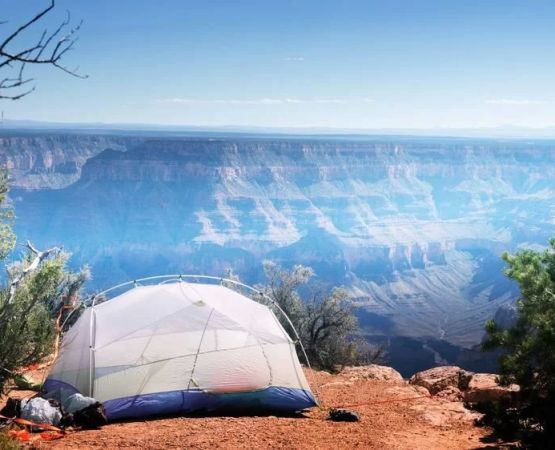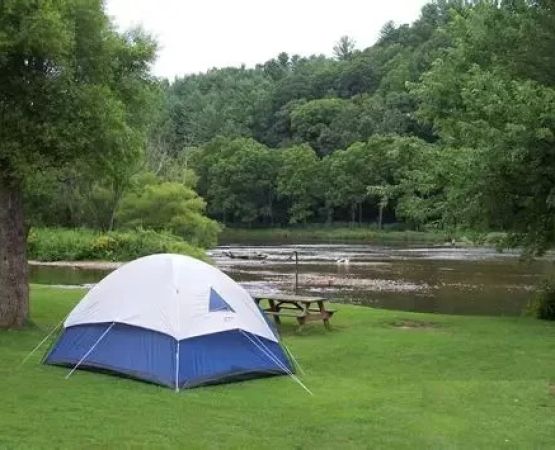How to Stay Comfortable in a Hammock During Camping
- 1. Why Hammocks Are Great for Camping
- 2. Common Challenges with Hammocks While Camping
- 3. Tips for Maximum Comfort in a Hammock
- 4. Adjusting the Hammock for Optimal Sleep
- 5. Real-Life Camping Experience: How I Learned to Love Hammock Camping
- 6. When to Choose a Hammock Over a Tent
- 7. Explore Pine Cliff Resort for the Ultimate Hammock Camping Experience
1. Why Hammocks Are Great for Camping
Hammocks have become a popular choice for camping enthusiasts due to their lightweight nature, comfort, and ease of use. When I first went hammock camping, I wasn’t sure what to expect. After all, how could hanging from two trees be more comfortable than sleeping in a cozy tent? But as soon as I laid down in the hammock, I realized the appeal. Hammocks provide a unique sleeping experience by cradling your body in a natural position, which can alleviate pressure points and provide better sleep quality, especially compared to a traditional sleeping pad in a tent.
Beyond comfort, hammocks also offer great portability. They are easy to set up and pack away, making them ideal for backpackers or campers looking to travel light. Plus, using a hammock allows you to avoid the hard, uneven ground found in traditional campsites, which can be a game changer for a good night’s sleep.
2. Common Challenges with Hammocks While Camping
While hammocks are incredibly comfortable, they do come with a few challenges that are worth addressing before you head out on your camping adventure. One of the most common complaints I’ve heard from hammock campers is the feeling of being too cold. Since hammocks leave your body exposed to the air, it’s easy to lose heat, especially in cooler weather.
Another challenge is getting the right angle when lying in a hammock. Sleeping in a hammock is not like sleeping on a flat surface; it requires adjusting the hammock to the right tension and position for comfort. If not done correctly, it can lead to discomfort, back pain, or feeling like you're being “swallowed” by the hammock.
3. Tips for Maximum Comfort in a Hammock
After a few nights of testing and adjusting, I’ve learned several key tips for staying comfortable in a hammock during camping:
3.1 Use a Hammock with a Good Design
The design of the hammock is crucial for comfort. I recommend using a hammock that’s made for camping and specifically designed to distribute your weight evenly. Look for hammocks with a spreader bar, which can help open up the hammock, or choose a gathered-end hammock if you prefer a more enclosed feeling.
3.2 Bring an Insulated Underquilt
When camping in cooler temperatures, an insulated underquilt is essential for staying warm in your hammock. I learned this the hard way during my first hammock camping trip when I woke up freezing in the middle of the night. An underquilt traps warmth underneath you, providing insulation where your body contacts the hammock.
3.3 Add a Sleeping Pad for Extra Comfort
If you don’t have an underquilt, a sleeping pad can also help. It’ll provide a buffer between your body and the hammock, reducing pressure on your back and keeping you warm by adding insulation.
4. Adjusting the Hammock for Optimal Sleep
Finding the perfect angle and tension is key to a good night’s sleep in a hammock. After several trials, I found that a 30-degree angle when lying in the hammock works best. This position allows your body to relax more naturally and eliminates the feeling of being “folded in half.”
Additionally, make sure the hammock is not too tight or too loose. If it’s too tight, you’ll feel like you're being squeezed. If it’s too loose, you’ll feel like you’re sinking into the fabric. Adjust the hammock so it’s taut enough to support your weight but with just enough slack to create a comfortable, even surface.
5. Real-Life Camping Experience: How I Learned to Love Hammock Camping
During my first hammock camping experience, I was skeptical. I had spent countless nights in a tent, surrounded by the usual comforts like a sleeping bag and air mattress. But once I tried out hammock camping, I realized it’s a completely different experience. I remember the first night I spent in the hammock—it was incredibly peaceful, and the gentle sway of the hammock lulled me to sleep. The view of the stars through the trees was the cherry on top, creating a sense of tranquility that I hadn’t experienced before.
Since that trip, hammock camping has become one of my favorite ways to explore the outdoors. I’ve spent nights in forests, near lakes, and even along mountainsides, all while enjoying the comfort of my hammock. With a few adjustments and the right gear, hammock camping has provided me with some of the best nights under the stars.
6. When to Choose a Hammock Over a Tent
There are definitely situations where a hammock is a better choice than a tent. If you’re hiking or backpacking and need to minimize weight, a hammock is the way to go. It’s lighter and more compact than a tent, making it easier to carry. Hammocks are also great for areas with uneven or rocky ground where a tent might not be able to set up properly.
On the other hand, if you’re camping in an area with frequent rain or high winds, a tent might provide more protection and stability. Hammocks are great for warmer, calmer environments, but you’ll want to ensure your camping spot is protected from the elements, or invest in a rain fly for added coverage.
7. Explore Pine Cliff Resort for the Ultimate Hammock Camping Experience
If you’re looking for the perfect location to try hammock camping, I highly recommend Pine Cliff Resort. Located in the heart of nature, this resort offers beautiful spots where you can set up your hammock and enjoy the serenity of the outdoors. Whether you’re a beginner or an experienced camper, Pine Cliff Resort provides the ideal setting for a peaceful and comfortable camping experience.
Ready to try hammock camping? Explore Pine Cliff Resort today and make your next adventure unforgettable. Click here to learn more and book your stay!






